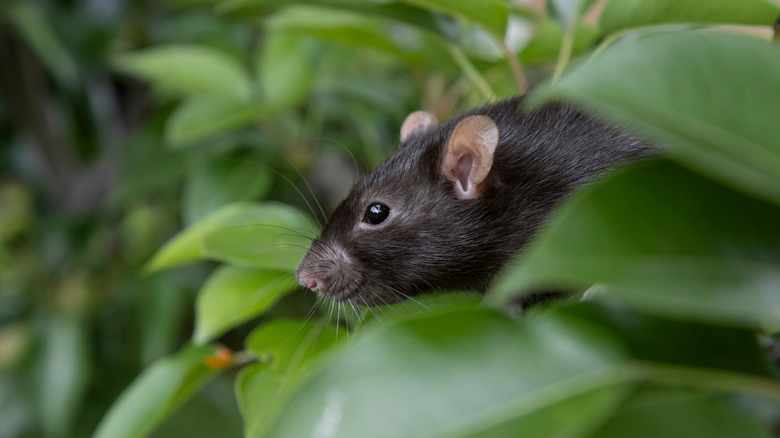What's Causing The Vegetables In Your Garden To Disappear At Night?
Picture this: You've done everything you could possibly do to protect your precious garden. You constructed a DIY fence to keep pests out of the garden, you've prepped your soil to keep the plants healthy, and you even used eco-friendly pesticides. Yet, after all that work, there's still something somehow getting into your garden and eating all your beautiful vegetables. That fence should be a stronghold to keep critters out, but the empty vines and bushes tell a different story. Unfortunately, that's because there is one type of critter that can actually climb that fence and up your stalks to get the food they desire: roof rats.
Unlike Norway rats (also known as "sewer" or brown rats) that look for higher protein content found in meat scraps, roof rats gravitate toward sweeter foods such as nuts and fruits, which is why this particular rat is potentially the reason for your vegetables disappearing at night. They'll create a half-dollar sized hole in your crops, then hollow out the fruit and leave the rind or the peel. Because these rats are known to be excellent climbers, any objects surrounding the garden that could be scalable give the rats easy access to climb into your sanctuary and find plants in the dead of night.
How to spot roof rats and protect your vegetables
Roof rats are smaller than Norway rats; they grow up to 18 inches in length including their tail — which is typically longer than their bodies — and they weigh around 5 ounces. They are black and typically have larger ears and very little hair. They can travel up to 150 yards from their "home" for food and water, so rat droppings (around ¼ to ½ inch in size) or any trails leading up to your garden are signs to look for.
The first step is to eliminate the rats. Roof rats congregate both indoors (such as in attics, cabinets, garages, ceilings, even inside walls) and outdoors (nesting in trees, shrubs, and wood piles). An exterminator can help locate and prevent roof rats from invading your home. Creating a physical barrier, cutting off access to future roof rats, is your second step. Given that these rats are climbers, using materials to protect your garden that are slippery and not as easy to climb helps keep these rodents out. For instance, metal roof flashing is a common material used for this purpose. Wrap a 1-foot-tall barrier around the planting bed to eliminate traction for the rats. A small mesh enclosure up the sides and across the top of the plants can also ensure that rats don't get to your precious fruits and vegetables.

